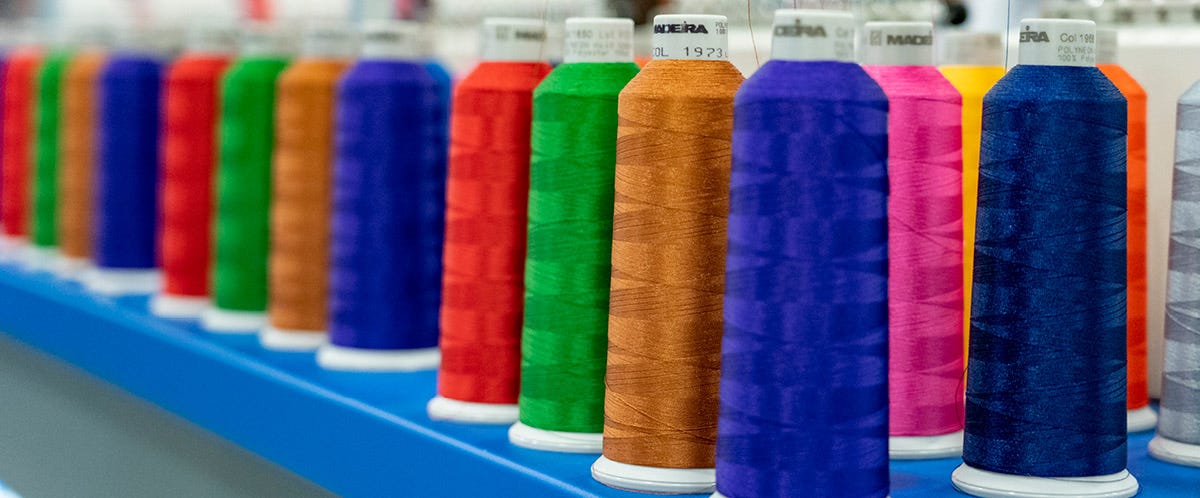
A Basic Guide to Embroidery Threads
When it comes to thread, many long time embroidery professionals have a strong preference on the type of thread they use. If you’re just starting out, you might have felt a little overwhelmed by the selection of thread and colors out there. You might have found yourself asking questions like “will this bleed?” or “how long will this last?”. Here you will find a basic overview of the various types of thread, what to look for, and tips on how to manage your thread selection.
Thread Types: Rayon vs. Polyester
Often times the big question on thread in the embroidery world is whether to use rayon or polyester. But invariably, it boils down to the type of jobs you will be doing. Rayon is made from natural wood pulp fibers, and this gives it a soft touch, flexibility, strength, and most desirably, a beautifully deep shine. Although you can wash and dry clean rayon thread without the risk of bleeding or fading, it is not recommended to wash with chlorine or bleach detergents. This makes it less desirable for clients who are ordering uniforms, outerwear, or corporate attire.
Polyester is made from a by-product of petroleum, which makes it very durable while holding color very well. It is also capable of handling many washes of chlorine and bleach. Though it has a stiffer feel, it still has a good shine and will be perfect for large orders.
Think about the sort of jobs you typically handle. Are they more decorative or fashion oriented? Or are you cranking out large orders of polos for businesses or schools in your area? Once you take a look at your client base, you can get a better idea of what to purchase and when, and often you’ll find you need both rayon and polyester in your shop.
Thread Selection
Thread typically comes in two levels of thickness, 40 and 60 (60 being the thinner thread). 60 width thread is perfect for small lettering designs, such as a tagline or website under a logo. If you have struggled with making these parts of your jobs look crisp and neat, keeping a small amount of 60 width thread in a handful of standard colors will help. For all other jobs that don’t require a lot of fine detail, 40 width thread is the standard.
Color is also something to consider. How many colors do you keep in your shop? Do you simply buy thread as needed or do you keep certain colors on hand? Many shops will keep a smaller variety of colors on hand in order to speed up production, and charge a bit more when customers request or need a color that isn’t often utilized. When special ordering certain thread for a uniform or corporate job, consider buying some extra spools and keep them set aside in case the customer needs to make a reorder. It’s also always a good job to keep some color charts on hand.
Things to Look For
When inspecting your thread (especially in the case of frequent thread breaks) you can look for a handful of things that will help you determine the quality of the thread you are using. Attributes such as strength, the evenness of fibers, and how well the fibers hold together are all things to look for in a good thread.
Pulling on a piece of thread until it breaks can give you a good idea as to how strong it is. If it breaks very easily, (meaning with only a slight tug) then you may have some bad thread. You should also inspect the thread to make sure it is one smooth continuous string of fibers, without too many irregularities or unevenness. If you have a magnifying glass or a light table, this will help you take a closer look.
Run a piece of thread back and forth along the edge of a table or sharp corner. If the thread immediately begins to shed lint and loose fibers, there is a big chance that the same fibers will wind up in your machine. This will cause you to waste time cleaning it often, or could even cause other problems in the long term.
New to embroidery and want more tips and ideas?
Sign up for the next Introduction to Embroidery Class by GSG U.
